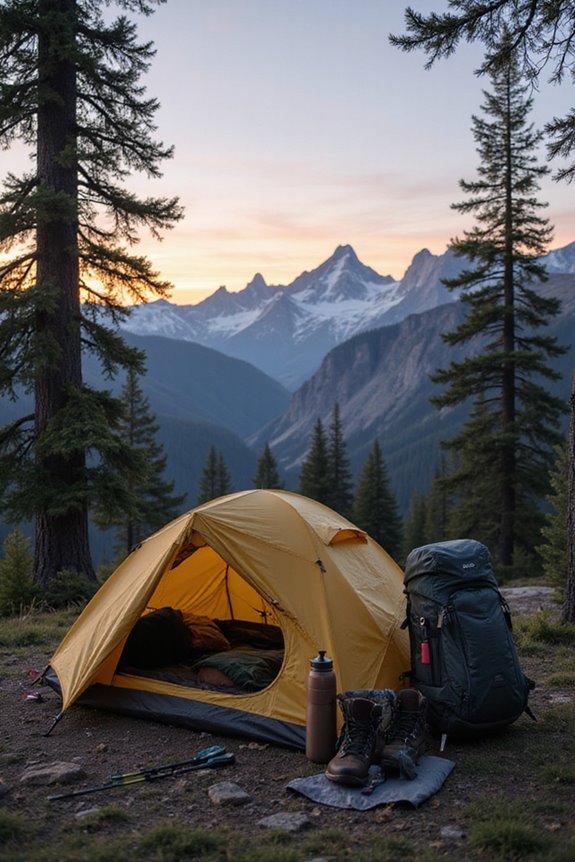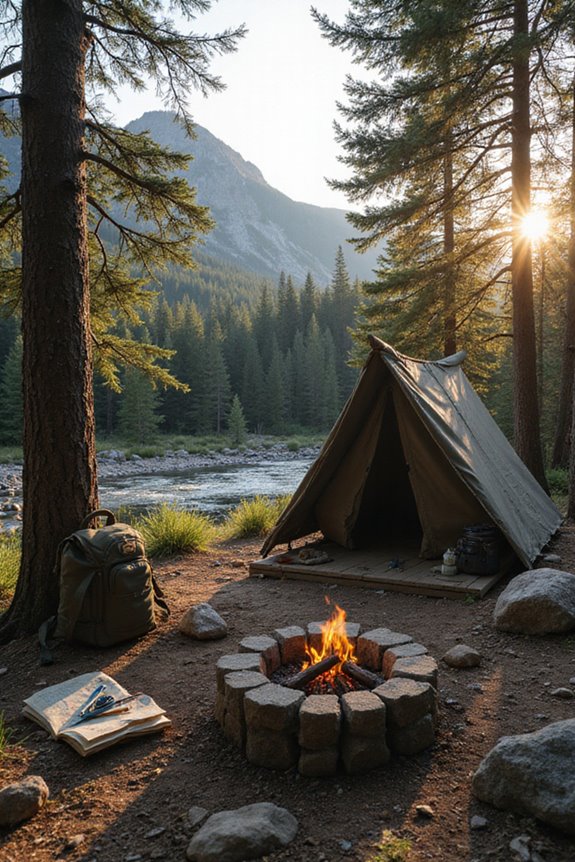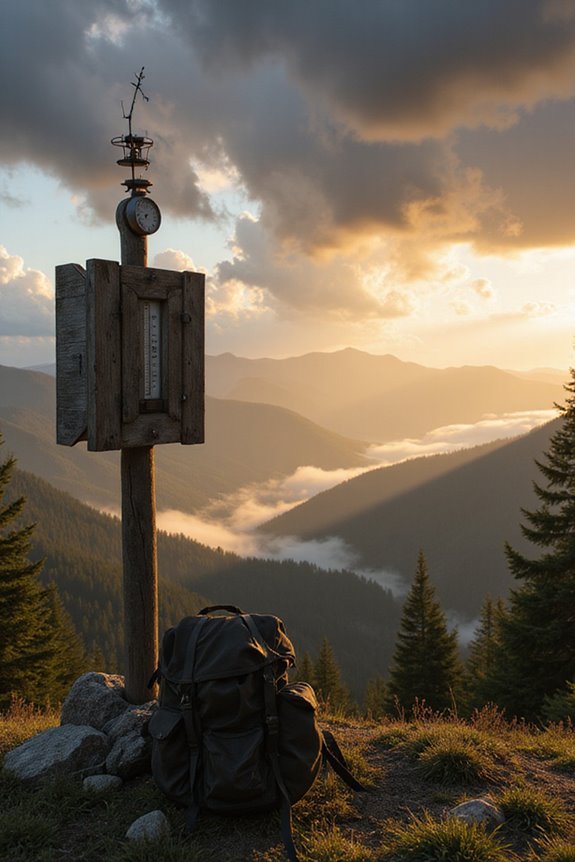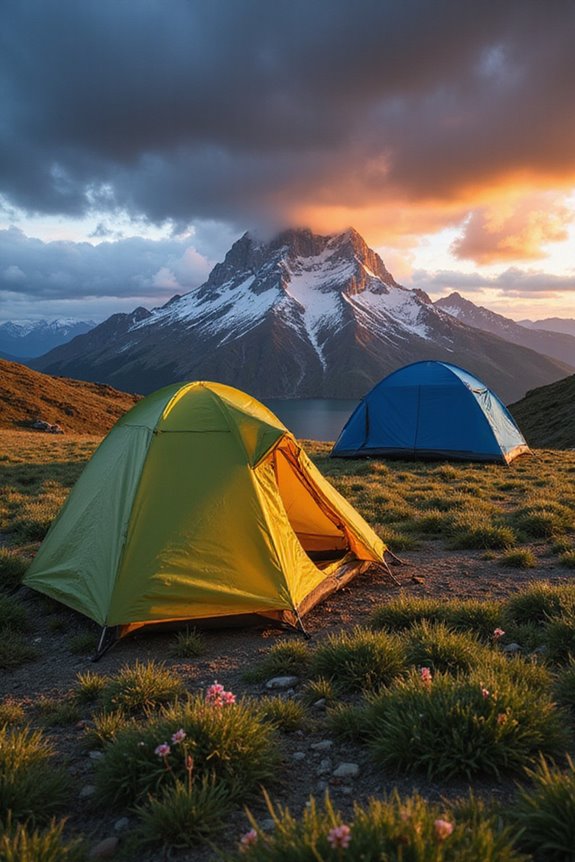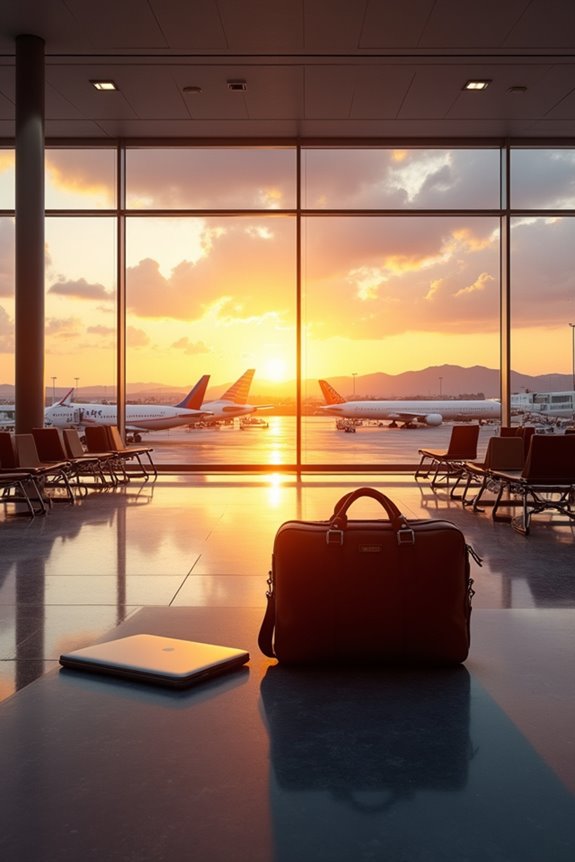When I head out for adventures, gear changes big time depending on the climate! In tropical spots, I pack lightweight, breathable clothes and a big water bottle. Deserts call for moisture-wicking layers and a wide-brimmed hat. For chilly mountains, I go for insulated boots and waterproof outer layers. And in humid forests, it’s all about moisture-wicking fabrics and sturdy, waterproof boots. There’s more to it, so let’s see what other goodies I can share!
Key Takeaways
- Tropical climates require lightweight, breathable fabrics, sun protection gear, and hydration supplies to combat heat and humidity.
- Desert conditions demand moisture-wicking layers, protective clothing against sunburn, and ample water resources for hydration during dry spells.
- Cold climates necessitate moisture-wicking base layers, insulated outer garments, and waterproof footwear to ensure warmth and dryness.
- Mountainous regions call for sturdy boots, navigation tools, and waterproof gear to handle variable weather and rugged terrain.
- Forested areas require lightweight clothes for humidity, insect protection, and waterproof boots to navigate muddy trails effectively.
Tropical and Hot Climates
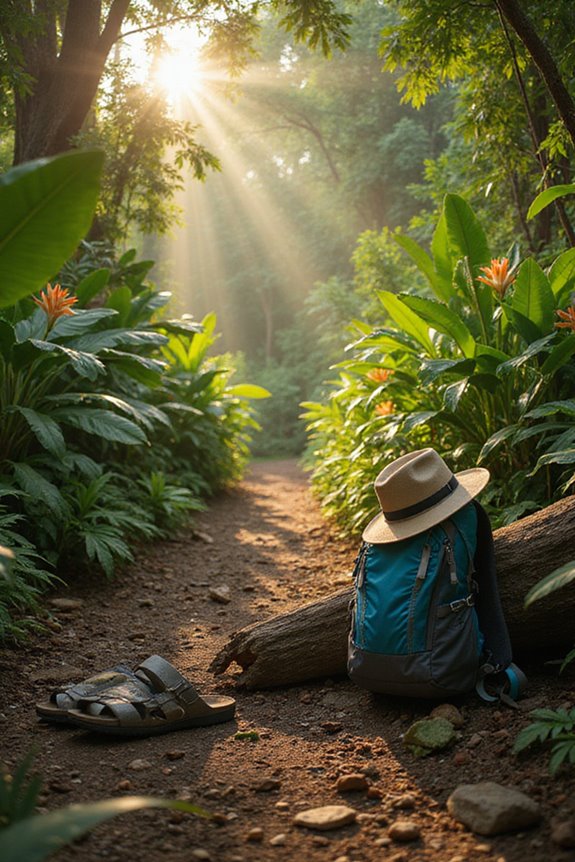
When it comes to tropical and hot climates, I can tell you from experience that it’s all about staying cool and protected while you’re out exploring. Trust me, lightweight, breathable fabrics are your best friends; they wick moisture and help you feel cooler. I swear by long-sleeved shirts treated with permethrin for insect protection—it’s like wearing a bug barrier! And don’t forget light-colored clothing; it reflects sunlight, keeping you even cooler. Hydration strategies are essential, so I always carry a large-capacity water bottle and electrolyte drinks. A wide-brimmed hat and UV-protected sunglasses are lifesavers too! Honestly, a good pair of lightweight trail runners makes all the difference when you’re sweating buckets. You never know what adventures await! Additionally, consider investing in quick-dry materials for your footwear, as they enhance comfort during outdoor activities.
Desert and Arid Climates
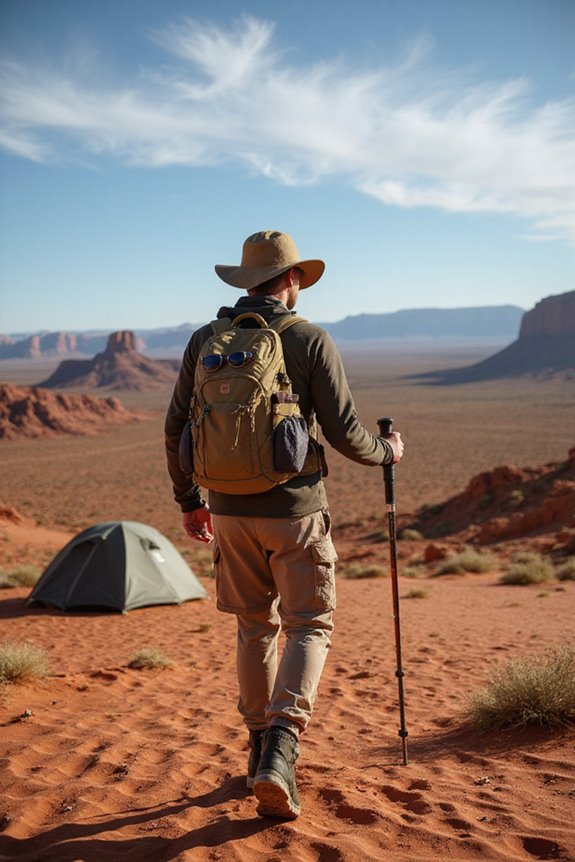
Whether you’re trekking across sun-baked sand dunes or traversing rocky trails under a blazing sun, desert and arid climates can be both breathtaking and brutal. To tackle this terrain, I always pack lightweight, moisture-wicking layers that protect me from sweat and heat. I’ve learned that long sleeves and pants are lifesavers against sunburn and those pesky rocks. A wide-brim sun hat is essential, blocking intense rays from my face, while UV-protective sunglasses keep my eyes safe. Hydration’s no joke – I carry multiple water bottles and electrolyte supplements to stay refreshed. Plus, setting up a lightweight tent with good ventilation helps me cope with those chilly desert nights. Remember, mastering heat acclimatization is key to your desert survival! Additionally, consider investing in sun protection clothing that offers UPF ratings to enhance your defense against harmful UV rays.
Cold and Winter Climates
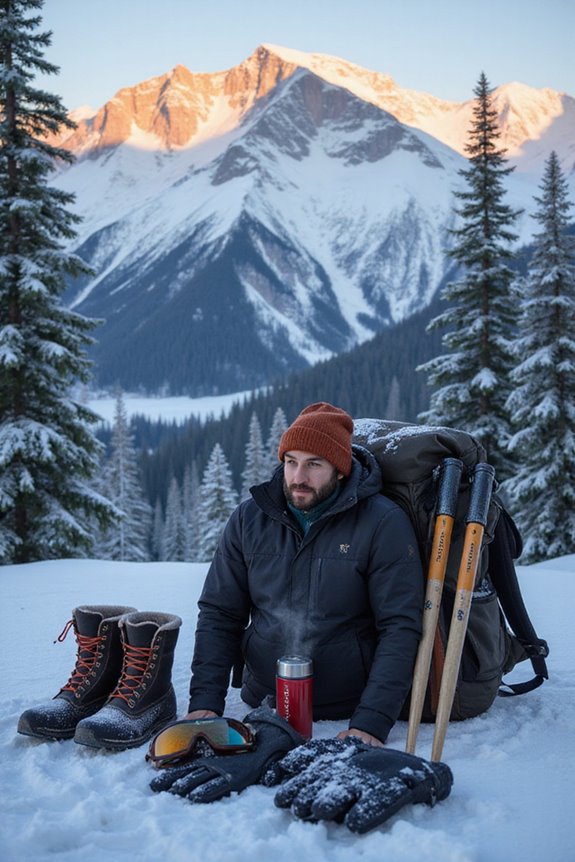
After the scorching heat of the desert, stepping into a winter wonderland can feel like entering a whole new world—one where you’re greeted by frosty air and sparkling snowflakes. For winter survival, mastering layering techniques is key. I always start with a moisture-wicking base layer—think wool or polyester. Next, I throw on a fleece or down jacket for warmth, topped with a waterproof outer layer to block the elements. Don’t forget insulated, waterproof boots to keep your feet cozy and dry! Carrying extra gloves and a warm hat is a lifesaver, too. Toss in trekking poles, a solid map, and some hot chocolate for those chilly breaks, and you’ll be ready to embrace the cold while staying toasty warm! Additionally, consider investing in a high-quality insulated jacket to ensure maximum warmth and comfort during your winter adventures.
Mountainous and Variable Climates
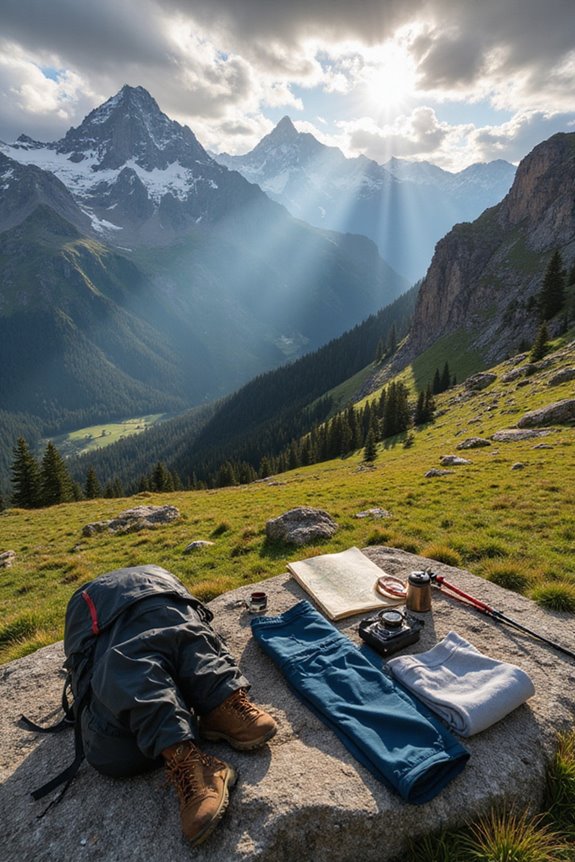
Exploring mountainous and variable climates can feel like starting on an epic adventure, where the scenery shifts as quickly as the weather. I’ve learned that the essentials for any mountain trek include sturdy mountaineering boots, crampons, and a trusty ice axe—nothing says “trust me” like a climbing helmet. Remember, altitude acclimatization is key, so pack those extra layers and heat-retaining gloves. I never head out without my map and compass; electronics can be iffy up there. And let’s not forget about snacks! High-energy foods and a hydration system are lifelines when you’re fighting through unpredictable weather. With all this gear, you’ll be ready to tackle the mountains, embracing both the beauty and challenges they throw your way! Additionally, investing in waterproof designs for your footwear will help keep your feet dry during unexpected rain or snow.
Forested and Humid Climates
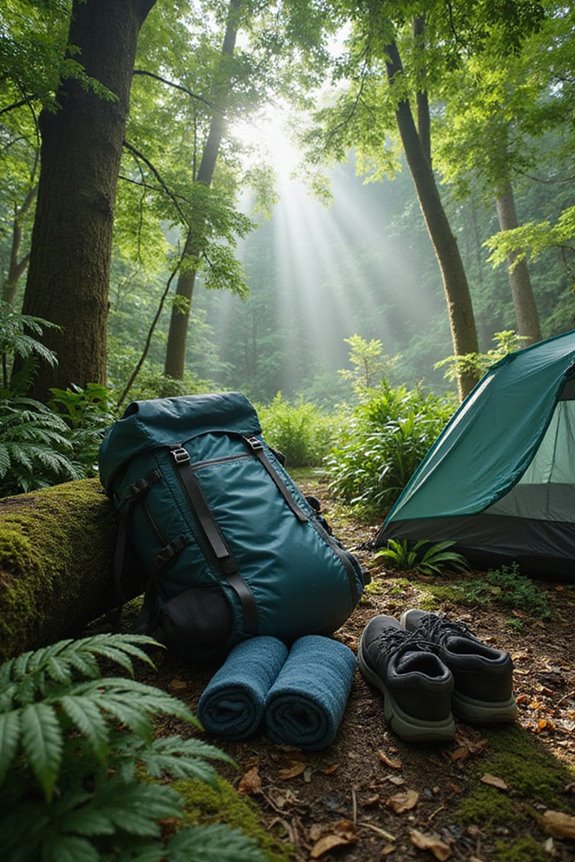
As I step into the lush embrace of a humid forest, I can’t help but feel that each moment is alive with possibilities—like a breathing tapestry woven with plants, insects, and the sounds of water trickling nearby. To truly enjoy this paradise, I always gear up with lightweight, moisture-wicking clothes. Long sleeves and pants keep me shielded from the sun and pesky bugs. I never forget my trusty insect repellent, either; it’s a must against those relentless mosquitoes! Waterproof hiking boots are my go-to for traversing muddy trails too. And hey, having gaiters helps keep the debris at bay! With the right gear, I can roam freely, soaking in nature’s beauty without a care in the world. Additionally, I always choose moisture-wicking socks to ensure my feet stay dry and blister-free during those warm and humid hikes.
Wet and Swampy Environments
Stepping into a wet and swampy environment feels like entering another world—one where the air is heavy with humidity and the ground squelches beneath my feet. For swamp survival, I always start with waterproof hiking boots to keep my feet dry and mud-free. Wool or synthetic socks are my go-to for moisture management, and liner socks help prevent those annoying blisters. High-top trail shoes support my ankles, while quick-drying materials guarantee I’m not lugging around soaked footwear. Don’t forget optional camp shoes—after a long hike, giving my feet a break brings sweet relief. With the right gear, I can embrace the sloshing adventure without worrying about keeping a dry pair of socks! Additionally, a lightweight hydration backpack can be essential to stay hydrated while navigating through the humid conditions.
Recommended Clothing for Each Climate
When it comes to choosing the right clothing for your adventures, knowing the climate can make all the difference—not all outfits are created equal! For hot, humid conditions, I love loose-fitting clothes made of moisture-wicking fabrics like polyester; they keep me cool and comfortable. When it’s cold, I swear by my waterproof outer layers and cozy base layers of wool—layering is key!
In milder climates, I mix and match breathable cotton and throw on a light jacket for those chillier moments. For dry desert days, light-colored, long-sleeved attire not only reflects sunlight but protects my skin too. These fashion tips make climate adaptation a breeze! Trust me, being prepared really amps up the fun on any adventure!
Essential Gear for Camping and Hiking
Hiking and camping are some of the best ways to escape the hustle and bustle of everyday life, but let me tell you, bringing the right gear can truly make or break your experience. First up, don’t skimp on quality sleeping gear—a solid tent, a sleeping bag rated for the temps, and a comfy sleeping pad are essentials. And let’s not forget about some kind of pillow; even a stuff sack with clothes works in a pinch! As for cooking essentials, a portable stove and good cookware can transform your meals from average to gourmet under the stars. Grab a sturdy lantern, too—there’s nothing like a cozy glow to set the mood in the great outdoors! Happy adventuring!
Safety Considerations for Outdoor Activities
Before hitting the trails or camping under the stars, it’s essential to think about safety—after all, nothing ruins a good adventure like an unexpected mishap. Trust me, I learned the hard way! Always do a weather assessment before you head out, since sudden changes can lead to serious issues like hypothermia or heat exhaustion. I always pack protective gear, especially a helmet, to prevent injuries during activities like snowboarding or hiking. Remember, injury prevention starts with being prepared. Keep first aid kits, enough water, and reliable communication devices handy—I’ve found they can become lifesavers in tricky situations. And don’t forget to brush up on those emergency procedures; knowing what to do can make all the difference when the unexpected hits!
Frequently Asked Questions
How Do I Choose the Right Backpack Size for Different Climates?
When I choose a backpack size, I consider the backpack volume related to climate considerations. For warm trips, smaller packs suffice, while cold climates need larger volumes for layering and essential gear to guarantee comfort and safety.
What Are the Best Cooking Tools for Outdoor Adventures in Various Climates?
I love campfire cooking more than anything! For outdoor adventures, I recommend lightweight, portable utensils and versatile cookware that adapts to different weather, ensuring every meal I make is delicious, regardless of the climate.
How Can I Prevent Gear From Getting Damaged by Moisture During Trips?
To prevent moisture damage during trips, I always pack my gear in waterproof bags for extra protection. I also use moisture barriers and regularly check gear to guarantee everything stays dry and in great condition.
What Are the Best Insect Repellents for Specific Environments?
When choosing insect repellents, I swear by a mix of DEET for humid areas and natural repellents in temperate regions. I use application techniques like treating clothing for lasting protection against pesky bugs.
How Do I Maintain My Outdoor Gear for Longevity and Performance?
I always prioritize gear cleaning after each adventure. For longevity and performance, I follow specific care tips, ensuring everything’s dry and stored properly. Regular checks and repairs keep my gear in top shape for future trips.

